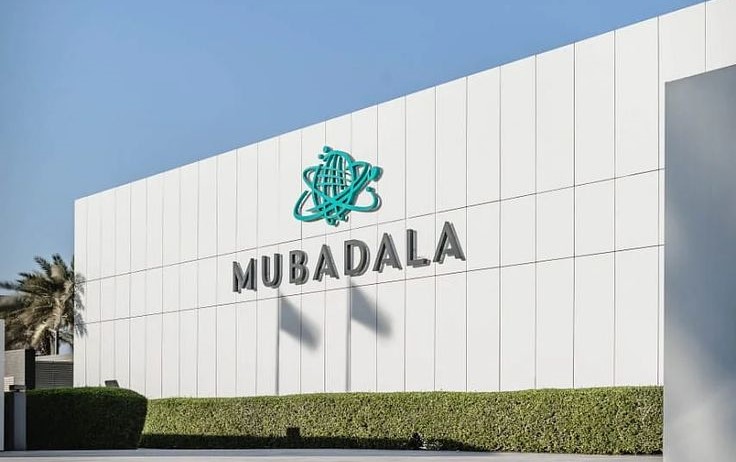How Funds Like Mubadala are Reshaping Tech, PE, AI & Data Center Investments
Sovereign wealth funds (SWFs) and institutional investors are no longer content with playing a background role in global markets. They are stepping forward as active leaders in shaping the future of technology, private equity, and digital infrastructure. Abu Dhabi’s Mubadala has become a defining example of this shift. Once primarily focused on diversifying national wealth, it now positions itself as a global technology investor, placing strong emphasis on artificial intelligence, data centers, semiconductors, and connectivity. This change reflects both the scale of global opportunity and the need for long-term strategic positioning in sectors that will determine competitiveness for decades to come.
What’s Changing: Key Moves & Trends
Mubadala and other sovereign funds are building dedicated vehicles and striking partnerships to sharpen their focus on future-proof industries. For instance, Mubadala co-founded MGX with G42, a platform that concentrates on AI infrastructure, semiconductor investments, and large-scale cloud ecosystems. Beyond launching new funds, these institutions are deploying capital into hyperscale data centers across multiple regions, aligning with the rapid expansion of cloud and AI workloads. Unlike in earlier decades, the emphasis is not just on financial return but also on influence, scale, and shaping the global technology landscape in line with long-term national strategies.
Scale & Focus on Digital Infrastructure
The surge in demand for AI and cloud services has elevated data centers to the core of institutional portfolios. Mubadala has invested in Yondr, a global developer of hyperscale facilities, and Aligned Data Centers, which operates across the Americas, ensuring capacity for hyperscalers and enterprises alike. In Asia, Mubadala has partnered with Princeton Digital Group to tap into emerging digital economies. These investments are complemented by stakes in fiber and network infrastructure firms such as CityFibre in the UK and GlobalConnect in Northern Europe, creating an integrated ecosystem. Together, these moves reflect a deliberate strategy to position sovereign funds as long-term owners of digital infrastructure, rather than passive capital providers.
Greater Allocation to Private Equity & Private Credit
Beyond infrastructure, sovereign funds are scaling up commitments to private equity and private credit markets. Mubadala has made private credit a cornerstone of its alternative portfolio, committing nearly $20 billion through partnerships with Apollo, Ares, KKR, Carlyle, and Goldman Sachs. This shift reflects a recognition that traditional public markets may not provide the desired returns or diversification in a volatile global economy. Private equity deals give these funds greater control and influence in shaping company growth, while private credit offers steady income streams and exposure to resilient asset classes during uncertain cycles.
Alignment with Long-term Megatrends
The thematic alignment of sovereign investments is unmistakable. Artificial intelligence and machine learning are creating unprecedented demand for computing power, while the proliferation of 5G, Internet of Things, and edge computing pushes infrastructure requirements even further. Mubadala’s deals are not opportunistic but tied to these megatrends, including sustainability. For example, Yondr has committed to net-zero greenhouse gas emissions by 2030, reflecting a broader push to marry growth with ESG principles. For sovereign funds, technology and sustainability are not parallel tracks but intersecting priorities shaping future economies.
Geographic Diversification & Global Reach
Another hallmark of this new leadership is diversification across geographies. Mubadala’s footprint spans the Americas, Europe, and Asia, giving it exposure to both mature and emerging digital markets. This global spread balances risks arising from geopolitics, regulation, and currency fluctuations, while also enabling funds to capture opportunities in high-growth regions. Such diversification underscores how sovereign funds are building resilient global portfolios designed not only to maximize returns but also to influence the balance of power in technology infrastructure worldwide.
Active Risk Management and Forward-Looking Positioning
Institutional investors are increasingly vocal about both the opportunities and risks presented by AI and digital transformation. Mubadala’s leadership has warned that the pace of disruption from AI could outstrip current expectations, affecting labor markets, industries, and even social structures. To manage these shifts, funds are embedding sustainability, energy efficiency, and governance into their investment frameworks. Risk management now goes beyond financial metrics, incorporating technology adoption cycles, regulatory pressures, and societal impact all of which influence the durability of returns.
Why This Is Happening: Underlying Drivers
Several forces explain why sovereign and institutional investors are leading in this space. The explosion of AI and data growth has created demand shocks for infrastructure that only long-term, well-capitalized investors can meet. Meanwhile, geopolitical concerns around technological sovereignty and supply chain resilience encourage nations to build capabilities through their sovereign funds. Public markets, with their volatility and inflated valuations, are less attractive than private equity or infrastructure plays. At the same time, the competitive race among global funds adds momentum, as each seeks to secure leadership in defining industries of the future.
Mubadala’s Notable Deals & Moves
Mubadala’s portfolio reflects these priorities. The investment in Yondr underscores commitment to hyperscale data centers with a sustainability edge. The Aligned Data Centers deal strengthens its position in AI-ready infrastructure across the Americas. Its co-founding of MGX with G42 highlights an integrated approach to AI, spanning infrastructure to software. Finally, its $20 billion private credit allocations reveal a strategy of balancing growth bets with income stability. Collectively, these moves showcase how Mubadala is constructing a portfolio that straddles growth, resilience, and global influence.
Challenges & Risks
Despite the strong momentum, risks remain significant. Data center development is capital-intensive with long payback horizons, and overcapacity could undermine returns. Environmental concerns around energy and water use are mounting, putting pressure on operators to achieve efficiency. Regulatory risks, including export controls on AI chips or data localization laws, could constrain global expansion. Technology cycles also pose risks, as rapid innovation may render infrastructure outdated sooner than anticipated. Furthermore, as more funds crowd into the same themes, valuations rise and competition intensifies, challenging the ability to secure premium returns.
What This Means for The Broader Market
The implications of sovereign funds’ leadership are far-reaching. First, digital infrastructure build-out will accelerate across both advanced and emerging markets, narrowing gaps in cloud and AI adoption. Second, sovereign funds will become instruments of national strategy, linking economic diversification with technological sovereignty. Third, private equity and infrastructure funds will increasingly seek partnerships with sovereign investors, making them co-architects rather than passive backers. Finally, ESG and sustainability standards will become inseparable from digital infrastructure deals, setting new global benchmarks for responsible investment.
What To Watch Going Forward
Key developments to monitor include the scale and direction of MGX’s capital deployment, regulatory changes in the US, EU, and China that could reshape AI investment flows, and the availability of renewable energy to power hyperscale data centers. Markets will also be watching whether sovereign funds can balance demand growth with supply constraints, avoiding overcapacity while meeting AI’s rising appetite. Emerging markets may play a larger role as funds extend their reach, raising questions about how local ecosystems will integrate with global AI and cloud infrastructure networks.
Sovereign and institutional investors, led by funds like Mubadala, are evolving into strategic architects of the future economy. Their leadership in AI, private equity, and digital infrastructure reflects both financial opportunity and national imperatives. By combining scale, long-term capital, and global reach, they are helping define the technological and infrastructure backbone of the next decade. Their choices will influence not only returns but also the pace of digital adoption, the resilience of global supply chains, and the sustainability of the technology revolution.



